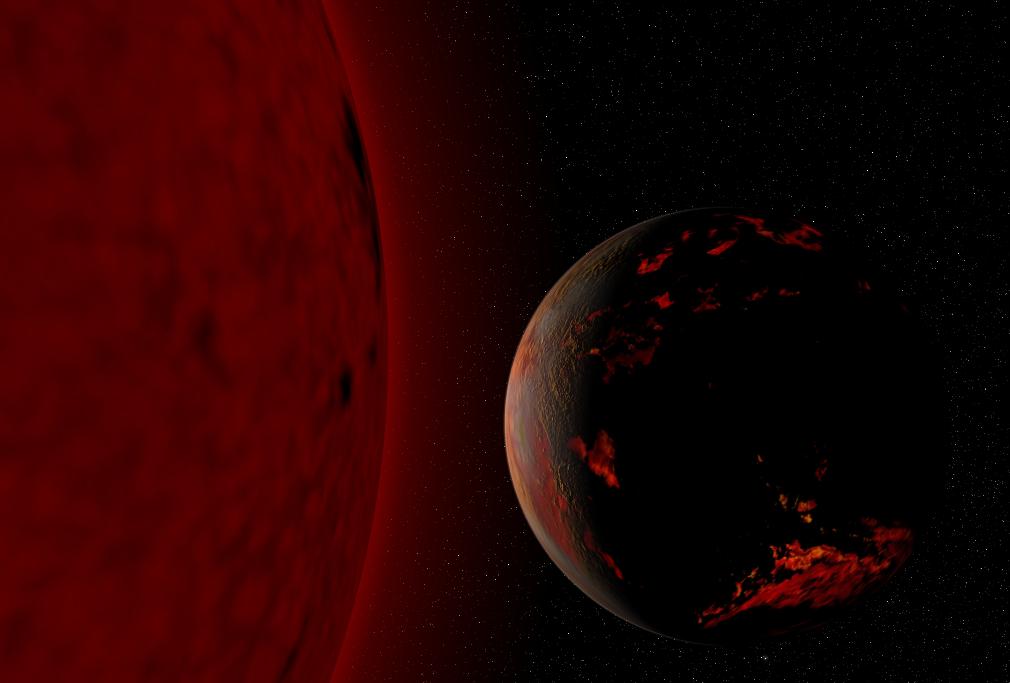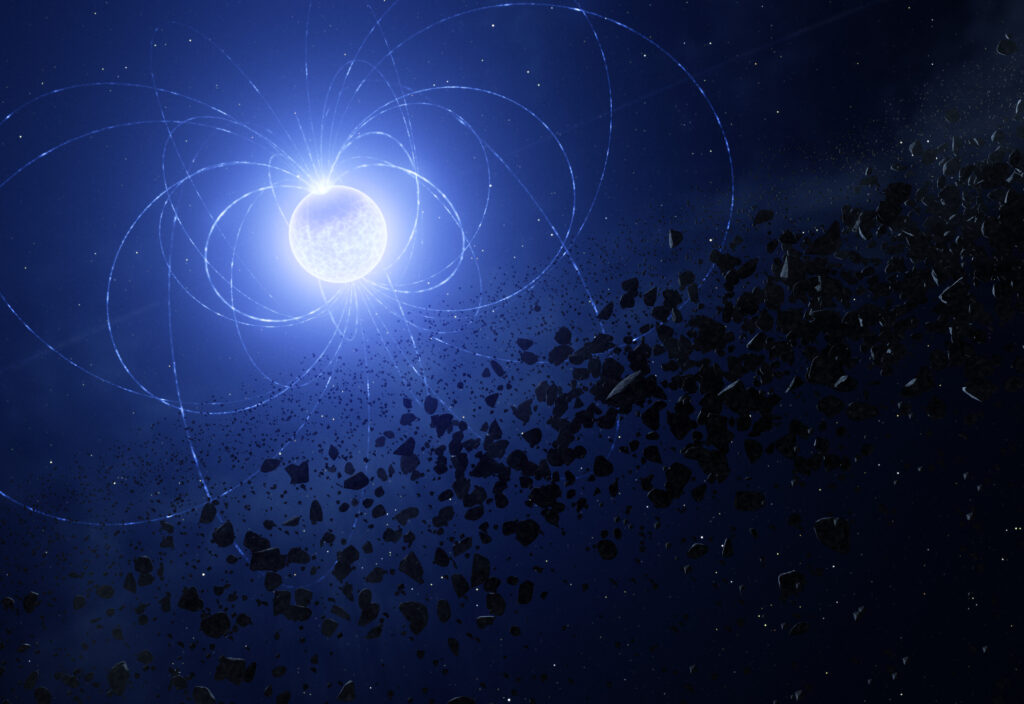Using the ESO’s Very Large Telescope (VLT), the researchers found an increased concentration of metals on the white dwarf. This “scar” was left after it absorbed a fragment of one of the planets that once orbited it.
Fate of planets in white dwarf systems
Stars like our Sun turn into red giants at the end of their lives, destroying the bodies next to them. Then they shed the atmosphere, and only the core remains of them, which gradually cools down and turns into a white dwarf.

To date, astronomers have accumulated a lot of evidence that such cosmic “coals” are capable of absorbing the remnants of planets orbiting around them. Previously, it was believed that in such cases, their substance was evenly mixed over the surface of the white dwarf. But the results of recent observations made using VLT show that this is not the case.
Metallic “scar” on a white dwarf
The discovery was made during the study of the white dwarf WD 0816-310, located 63 light-years from the Sun. Astronomers have managed to find an increased concentration of metals in its spectrum. Since all elements heavier than hydrogen and helium “sink” quite quickly inside white dwarfs, this suggests that recently WD 0816-310 absorbed some kind of object. According to scientists, it was a planetary fragment with a diameter of about 500 km. It is comparable to the size of the asteroid Vesta.

However, the most unusual thing is that the metal content on the dwarf’s surface varies with an interval of several days and correlates with its rotation and magnetic field. This suggests that they are concentrated in a certain area — or rather, on one of the magnetic poles. Apparently, the magnetic field of the dead star attracted the metal, creating a kind of “scar”.
In the future, astronomers could study such “scars” to determine the chemical composition of exoplanets. In addition, the discovery clearly demonstrates that planetary systems can remain active even after the death of a star.
Earlier, we talked about the discovery of the smallest known star with a white dwarf companion.
According to https://www.eso.org
Follow us on Twitter to get the most interesting space news in time
https://twitter.comne/ust_magazine


